The health resorts of Karlsbad and Marienbad, now called Karlovy Vary and Marianske Lazne, have retained much of their Fin de Siecle grandeur, when the world’s elite came to the spas in Bohemia.
Hot waters have attracted ill people for centuries. In the time preceding modern medicine hot water, preferably smelly and mineral-rich, has been prescribed by doctors as a cure for a whole range of ailments. And there are perhaps few health resorts more famous than the Bohemian spas, which were de rigueur with the European, German-speaking empire elite during the late 19th and early 20th Century. Writers, composers, kings and queens all made their way to Karlsbad, and sometimes Marienbad, for a lengthy treatment of daily sulphurous baths, and then drinking 5 to 6 glasses of the repulsive stuff, as well, whilst in the hours in between the hills – and if it rained, the colonnades – provided ample opportunity to stretch the legs whilst doing some serious networking.
Nowadays doctors prescribe pills, much more effective and much more efficient. Yet, the attraction of the spas has not diminished. Karlsbad is now called by in Czech name, Karlovy Vary, and Marienbad is called Marianske Lazne. The faith in the results of the treatment is, I suspect, less than that a 100 years ago. And the German-speaking elite, for good measure, has been replaced by thousands of tourists from all over the world, but mostly Russians. Except that now, thanks to Corona – ironically one of the few illnesses that we have not yet a medicine for – the majority of the visitors are local tourists. And there are not a whole lot of them.
Undeniably, these resorts come with a certain charm, or better even, a certain grandeur. In Karlsbad beautiful Fin de Siècle architecture, in the form of grand hotels and classy apartment buildings, lines the banks of the river Tepla. Never mind that the streets are also lined with souvenir shops, not in the least the stands that sell tacky cups which can be used to drink the mineral water that is freely available everywhere, should you have forgotten your own – and should you wish to drink the water. Beyond the buildings, parks in the hills provide ample opportunity for walks; only the old colonnades, designed for walks if it rained, are not what they used to be. One, originally made of wrought-iron, has been melted down by the Nazis during the war, and has now been replaced by a modern marble monster; the powerful geyser inside has been switched off. A temporary wooden colonnade, Trzni, has now lasted for over a century, and is in better state than the others. Two more, Sadova kolonada and Mlynska kolonada, were being renovated at the time of our visit, and may well be under a sort of semi-permanent renovation. Come to think of it, there is more scope for renovation, quite a few of the buildings need patching up. And I am not talking about the Communist-era contribution, a horrible concrete construction that mars the view of town from the north – and which open air swimming pool has been closed for, so it appears, a long time already. But, beyond this monstrous creation, there definitely is a certain grandeur in Karlsbad.
Marienbad is a smaller affair, but perhaps nicer. The ‘kur’ hotels are arranged around a huge central park, lovely laid out with fountains, seating platforms and winding walking paths. On one side is the only ancient colonnade, the Maxim Gorki Colonnade, which is beautifully restored, full of frescos on the ceiling. There is a newer colonnade, too, less attractive. The other sides of the park, and slightly higher up the hills, are the hotels and the spas, all beautifully restored to their former glory.
Of course we need to try this ourselves, so we book a few hours in the Nove Lazne hotel, the one with a Roman bath – or so it claims – with decorated arches and pillars and ceilings, and a few no doubt more recent additions like whirlpool, steam bath and sauna. There are very few tourists, that part of the equation still holds well, and for much of the time we have the complex for ourselves, mostly.
next: Prague

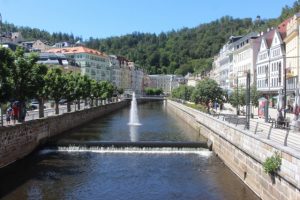
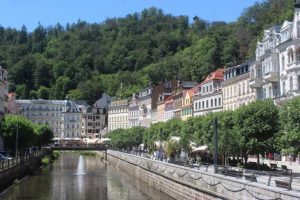

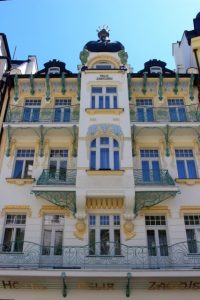
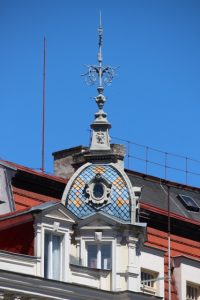

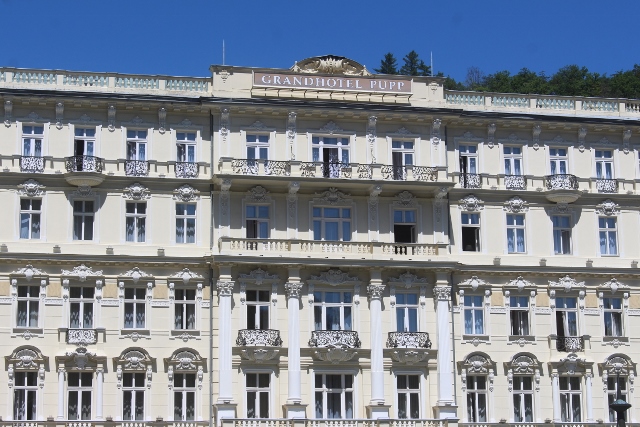
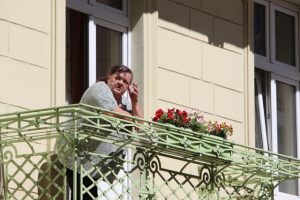
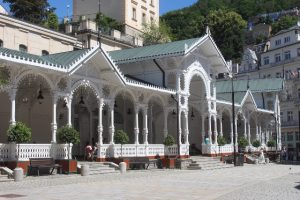
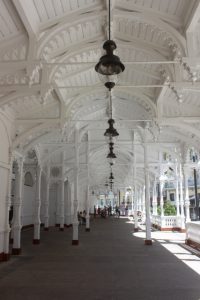

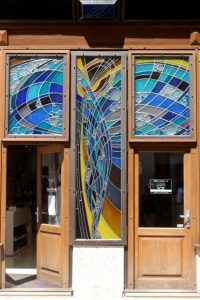



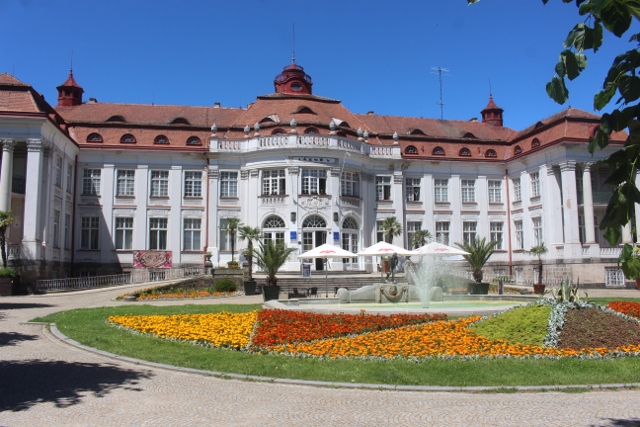
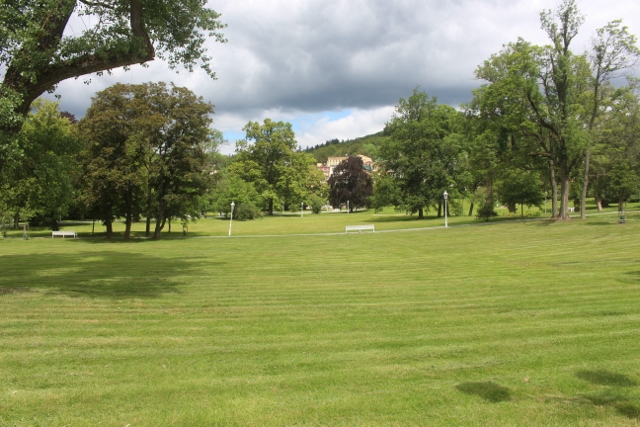
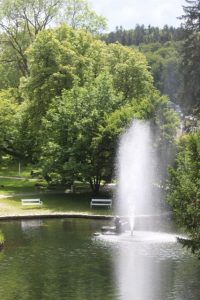

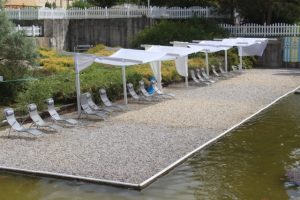

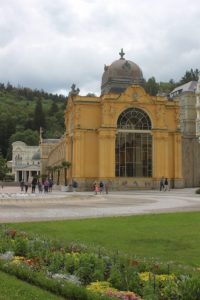
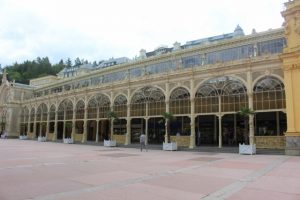
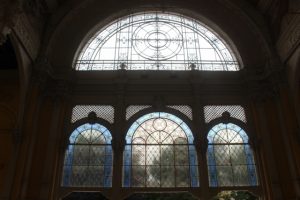

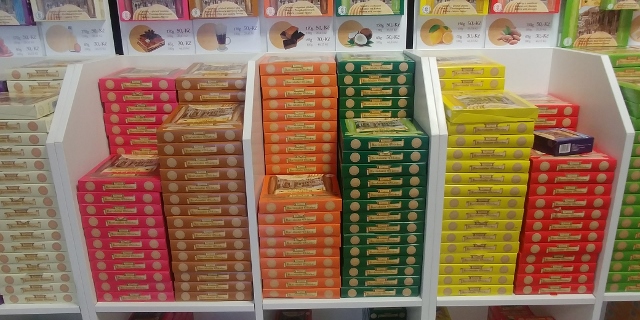
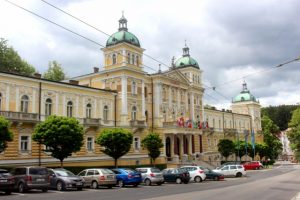

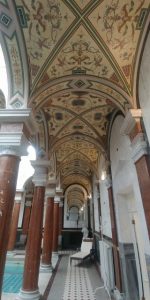
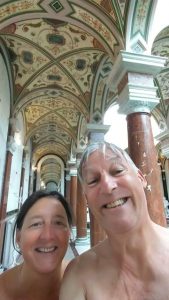










Jullie hebben je vast erg gezond gevoeld na dit bezoek en het “ gezonde” water???
nog altijd beter dan na het merendeel van de Tsjechische wijn, Thea, al waren er ook heel acceptabele wijnen bij.